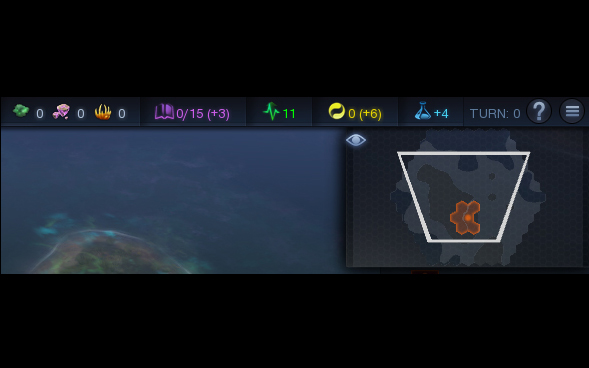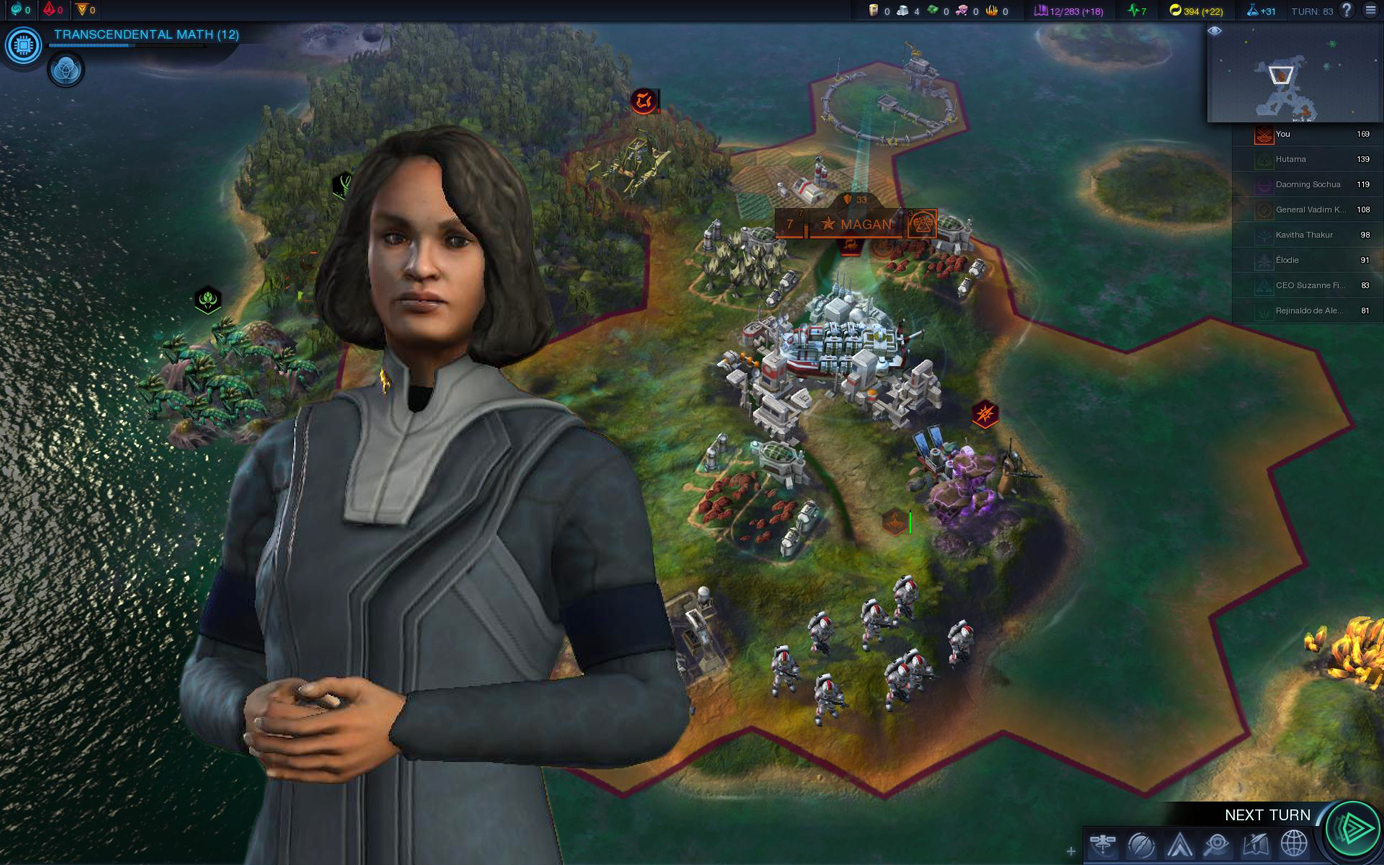
What's changed in Civilization: Beyond Earth?
Those who are experienced with the Civ series—or at least Civilization V—will recognize how familiar Beyond Earth feels, but the experience of playing it for the first time can be overwhelming. There's a whole new visual language to learn and a lot of changes to classic Civ gameplay.
Based on my playtime with a recent preview build (which was limited to 250 turns), I’ve put together a list of the biggest changes I've found from Civilization V to Beyond Earth. There are many more small changes beyond these, but if you want to be prepared to jump head first into the game on launch day, these are the most important things you should know.
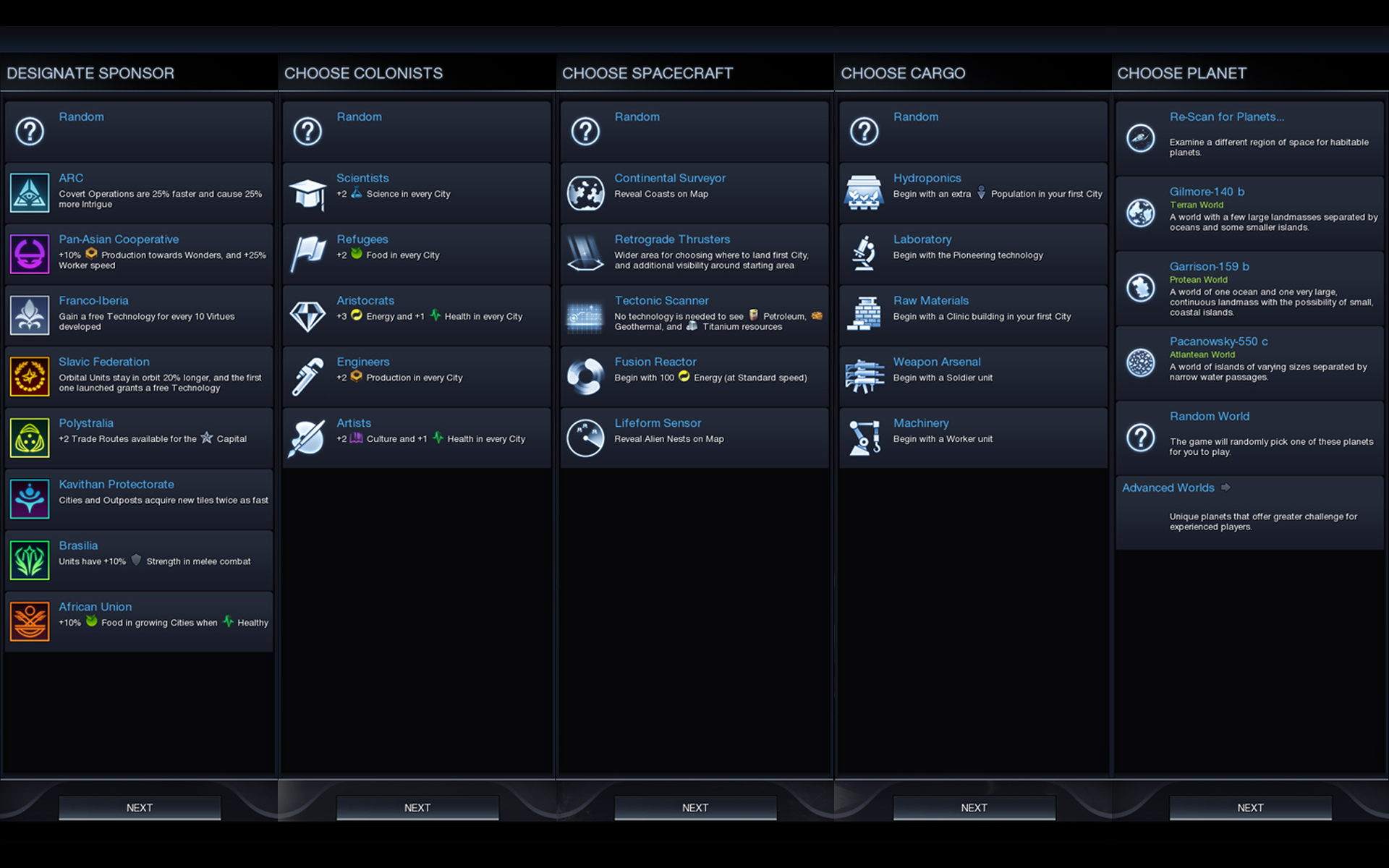
Starting a new game
The civilizations still have their differences, but now you also get to choose your colonists, spacecraft, and cargo; a process which basically equates to customizing your own civ at the start of each new game. Each choice you make provides a different bonus, some long term and some one-time boosts.
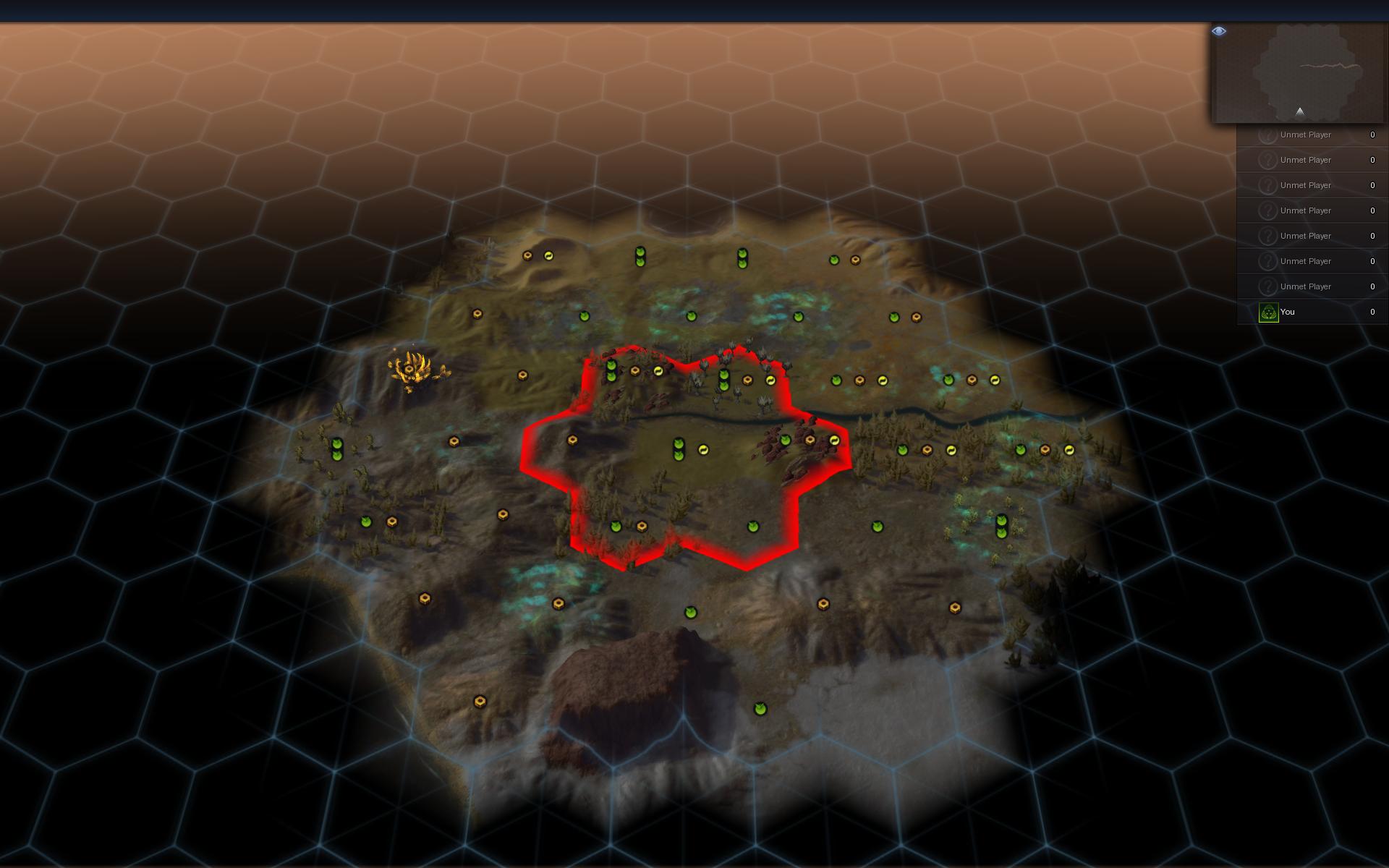
Landing your first city
Gone are the days of starting with a settler and a warrior, wondering whether to found a city right away or waste those first few turns looking for greener pastures. The game now begins by giving you a seven tile dropzone from which you can pick the spot for your first city. The zone can be expanded one tile in each direction by choosing the Retrograde Thrusters ship option, and two of the cargo choices allow you to start with either a worker or a soldier, but otherwise you have this limited space to choose from and one lonely explorer to look around with.
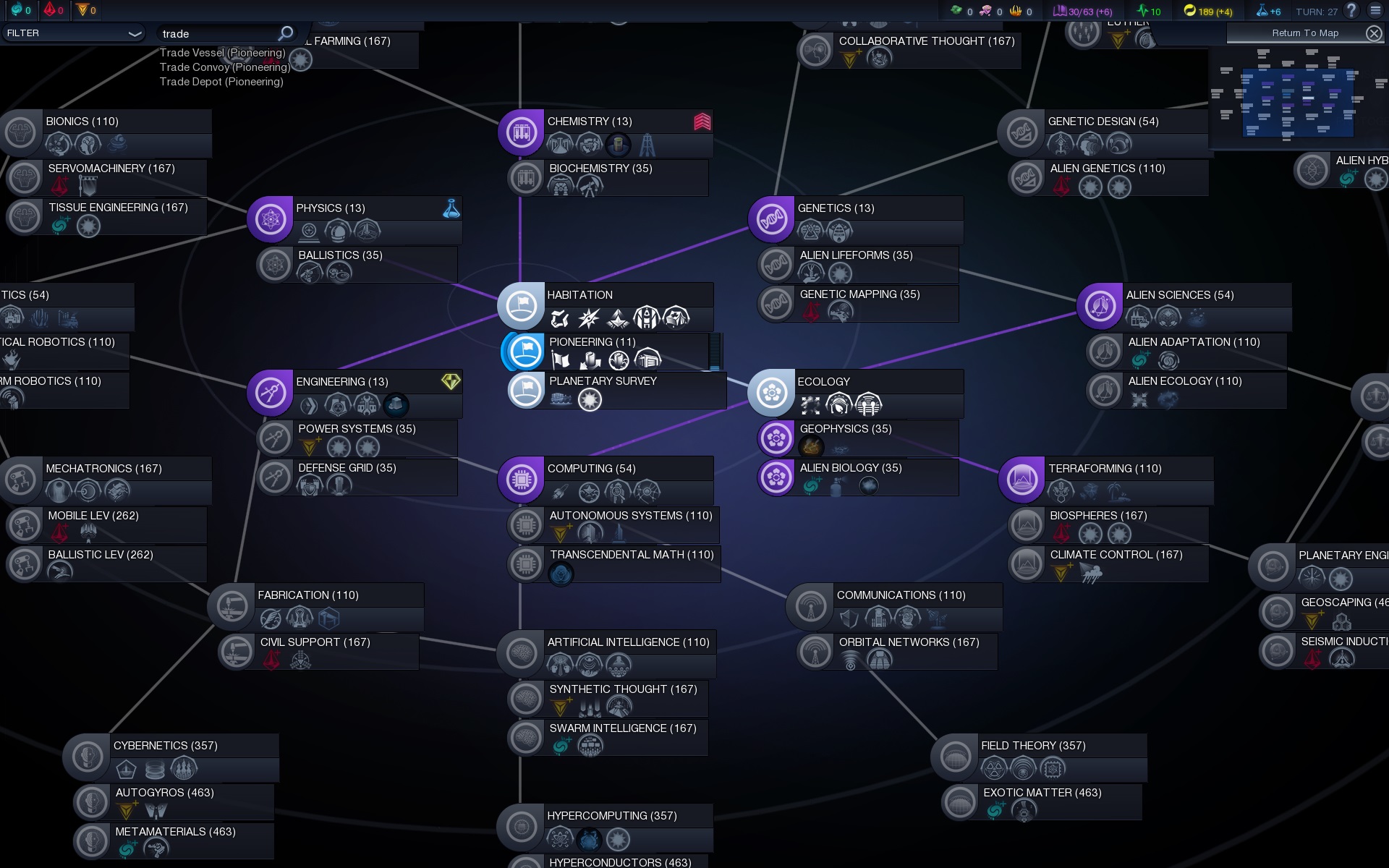
Tech web
No longer linear, Beyond Earth has replaced the standard tech tree with a web. Many of the technologies near its center are still must haves, but what path you take to the outer edges is a matter of strategy and playstyle. This gets even more complex when considering wonders, which are unlocked through research just like previous games. With no set path or tier system, you can research directly toward the wonders you want and try to grab them before anyone else, while your opponents might not even be going in the same direction as you. The new tech web can be incredibly overwhelming to take in on your first few playthroughs, and Firaxis has equipped it with a search bar and filters to help ease this.
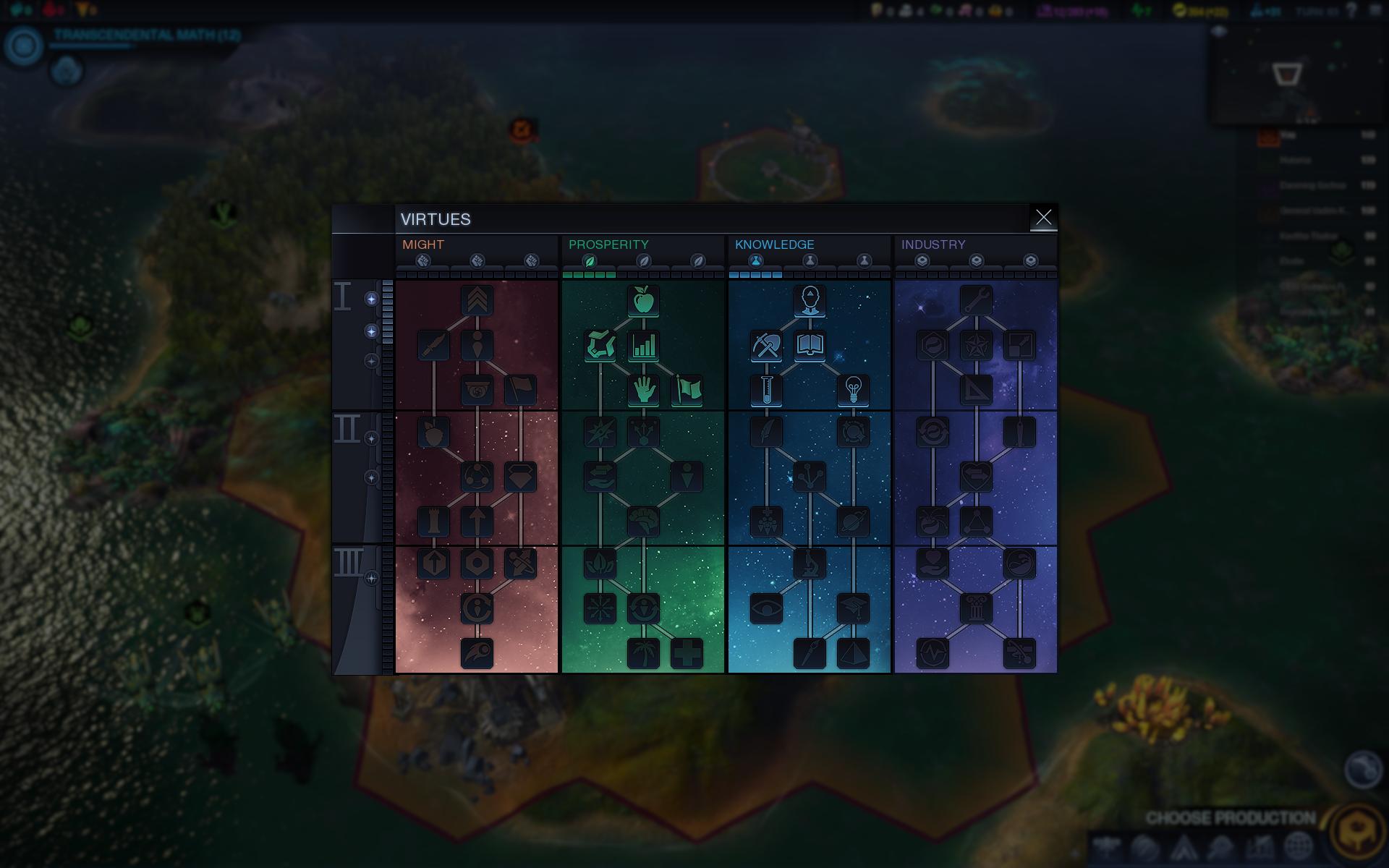
Virtues
Social policies are gone, replaced by the virtue system. Culture plays the same role it did in Civilization V—excluding the tourism system added with the Brave New World expansion—but unlike the social policy trees, all four virtues are available from the get go. You have to start at the top of a tree and work your way down, with the largest bonuses found in the third tier. A feature unique to this system is the synergy bonuses, which give you a boost for either going deep into one tree or wide across one of the three tiers. This way, if you only focus on getting to the bottom of a single tree you will get greater bonuses in that category, but miss out on easy to grab ones you'd get by diversifying.
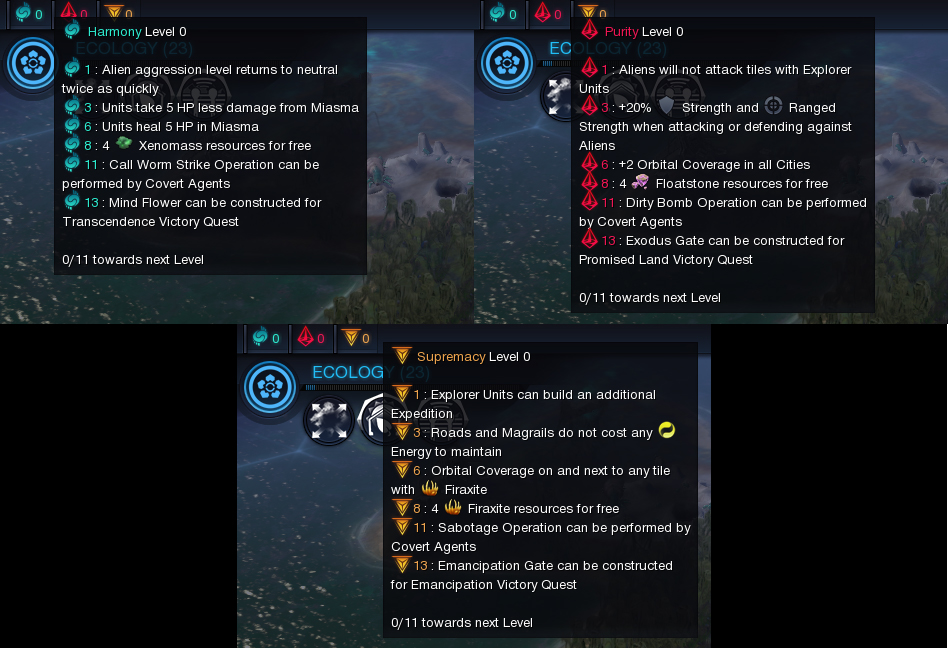
Affinities
Probably the biggest change when it comes to strategy, Beyond Earth has a feature called affinities. The three affinities—Harmony, Purity, and Supremacy—are not mutually exclusive, but you will most likely find yourself only going deep down one path. You earn experience for a certain affinity through quest decisions or researching specific technologies, leveling up each affinity as you do. At certain levels, your civ will gain a bonus unique to that affinity. Affinity levels also affect how you upgrade your military units, which I will get into later. Reaching the highest level of an affinity will allow you to start earning points towards that affinity’s victory condition, making them a key part of winning the game. Apart from strategy, each affinity represents a different ideology for how your civ will colonize this new planet, so flavor and style might play a role in your choice too.
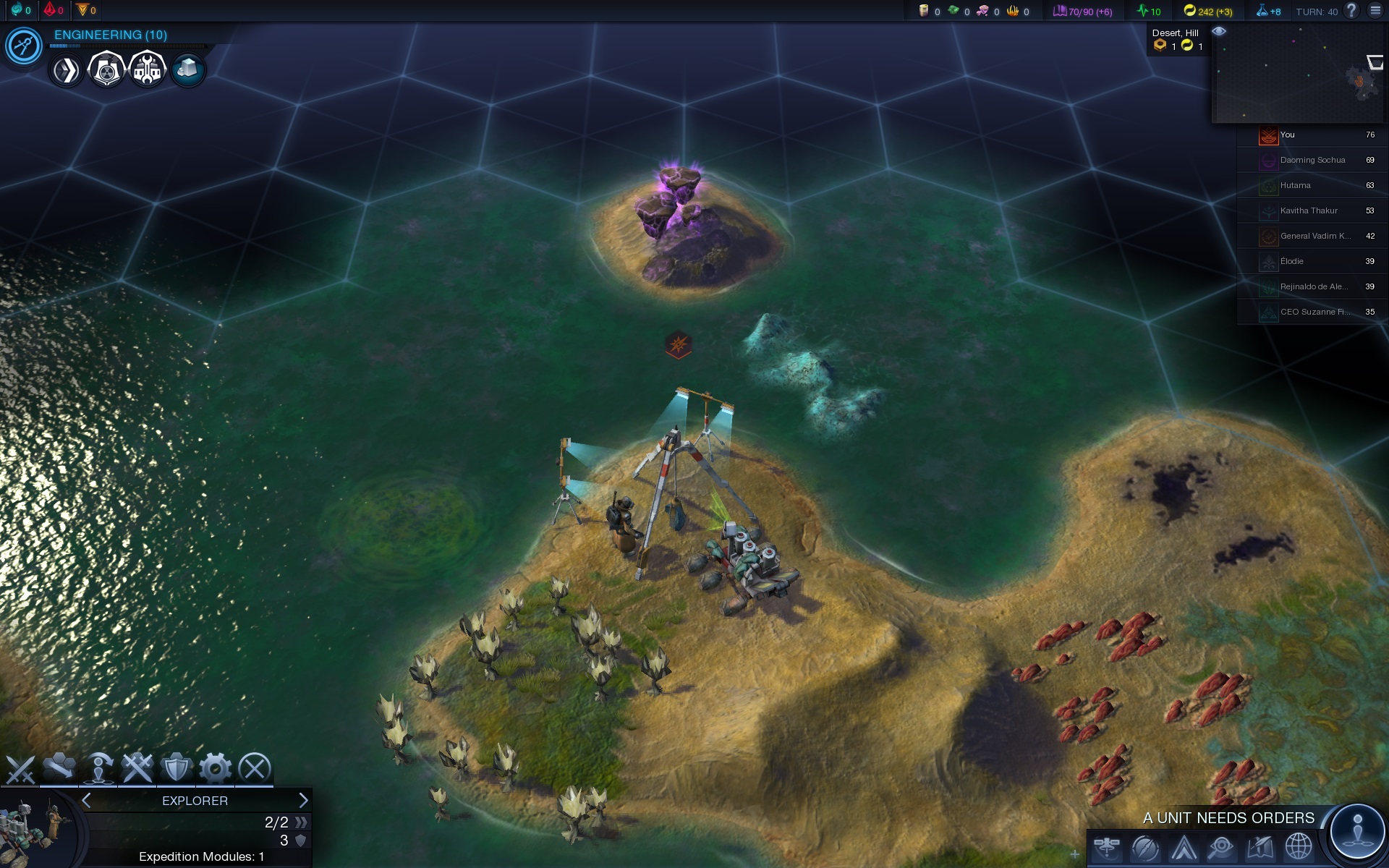
Explorers and expeditions
The explorer replaces the scout, and for most of the game will be used to the same function, however explorers also have a vital secondary role.They are the only unit that can construct an expedition on the new artifact tiles, giving you access to bonus resources, new quests, new units, and more. Initially, explorers must return to a city between each expedition, but the amount of expeditions they run before returning can be increased through research and affinity leveling. One of their most useful functions is opened after gaining one level in the Purity affinity, making it so no tile with an explorer can be attacked by aliens, allowing free exploration and an impenetrable alien shield for your cities and settlers.
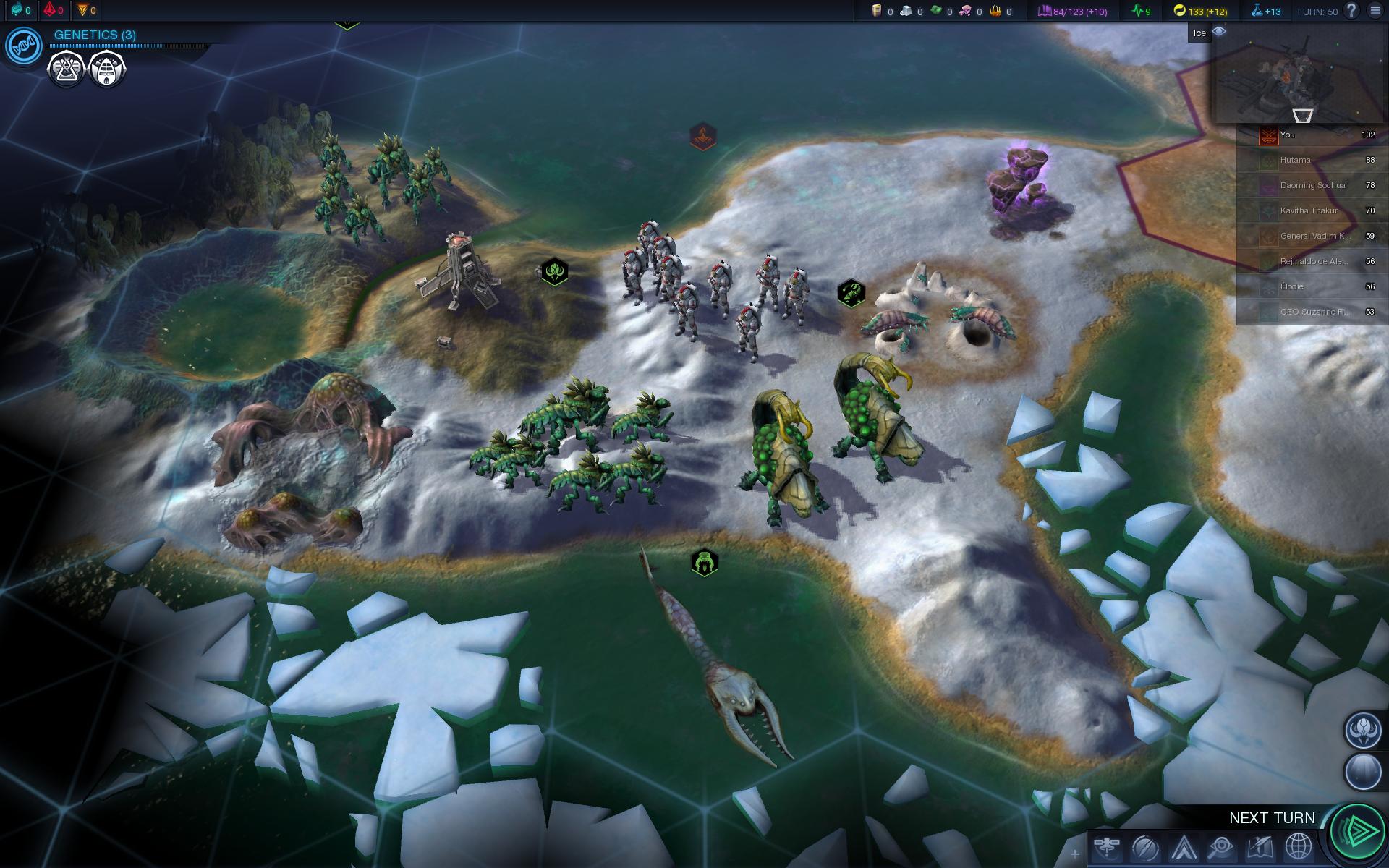
Aliens
What were barbarians in Civilization V have become aliens in Beyond Earth, but the two act very differently from each other. The planet’s indigenous life is erratic and unpredictable, sometimes attacking your units straightaway and other times letting you pass by without a second glance. They will leave their nests, the replacement for barbarian encampments, unguarded, but a greater number of nests will pop up. If you attack the aliens too much, they will become enraged and all aliens across the planet will become incredibly aggressive towards your civ for a short time, even attacking your cities. It’s up to you whether you want to keep your distance or wipe them off the face of your new home, but either way at least one of the other civs will be upset by the decision you make.
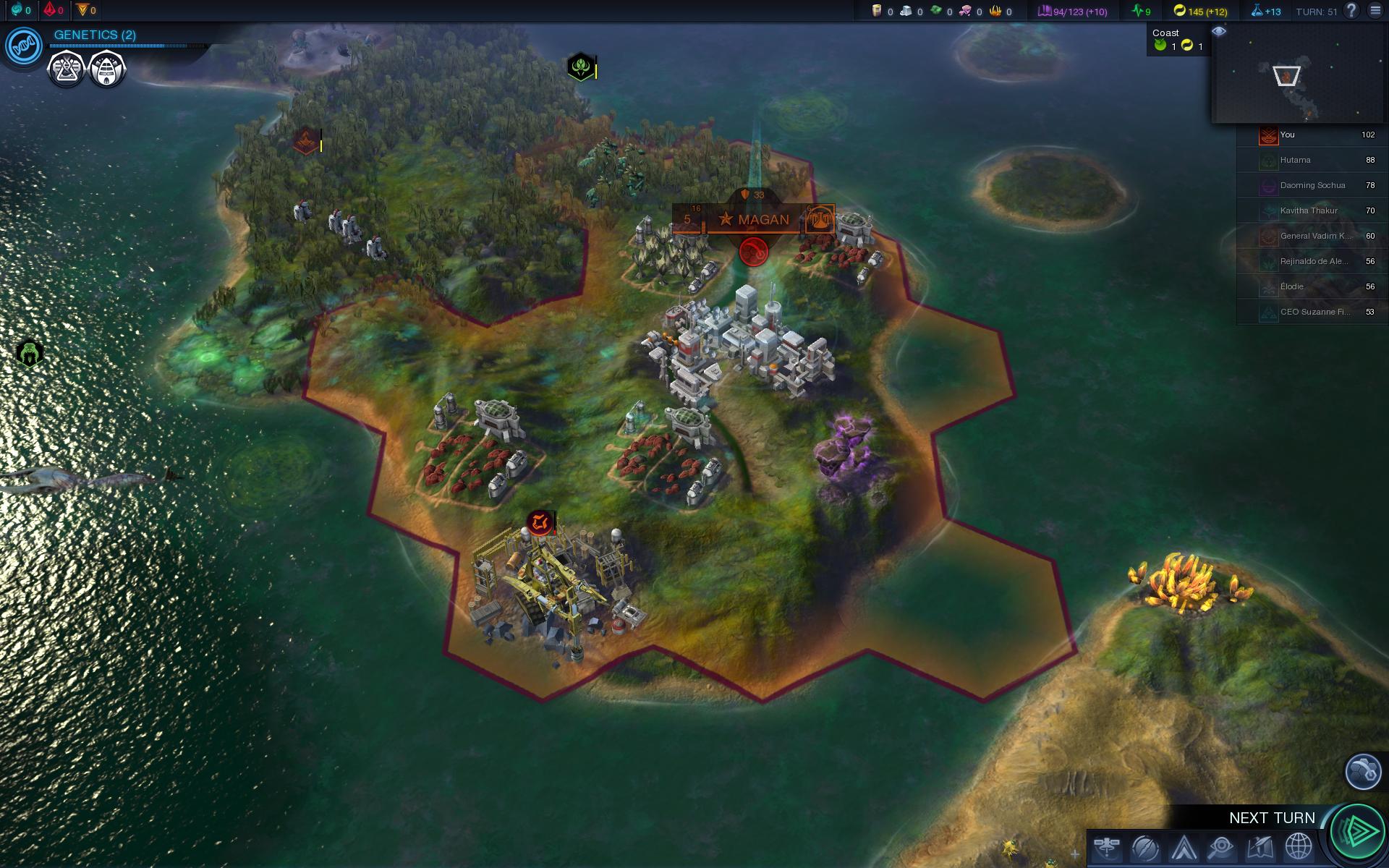
Resources
Pretty much every resource tile is new. I don’t want to spoil what they all do—discovering the intricacies of an alien planet is a lot of fun—so I’ll stick to the three important strategic resources: Firaxite, Xenomass, and Floatstone. Each one is associated with one of the three affinities and requires a different mid-game technology to harvest, after which they can be used to build that affinity’s unique unit. With all three revealed on the map at the start of the game, you can plan out which affinity you are working towards and which resource you’ll want to claim very early, even if you won’t be able to use the resource until later.
In the above image: Xenomass is the green pools on the left, Floatstone is the purple rocks just below the city, and Firaxite is the orange crystals on the bottom-right island.
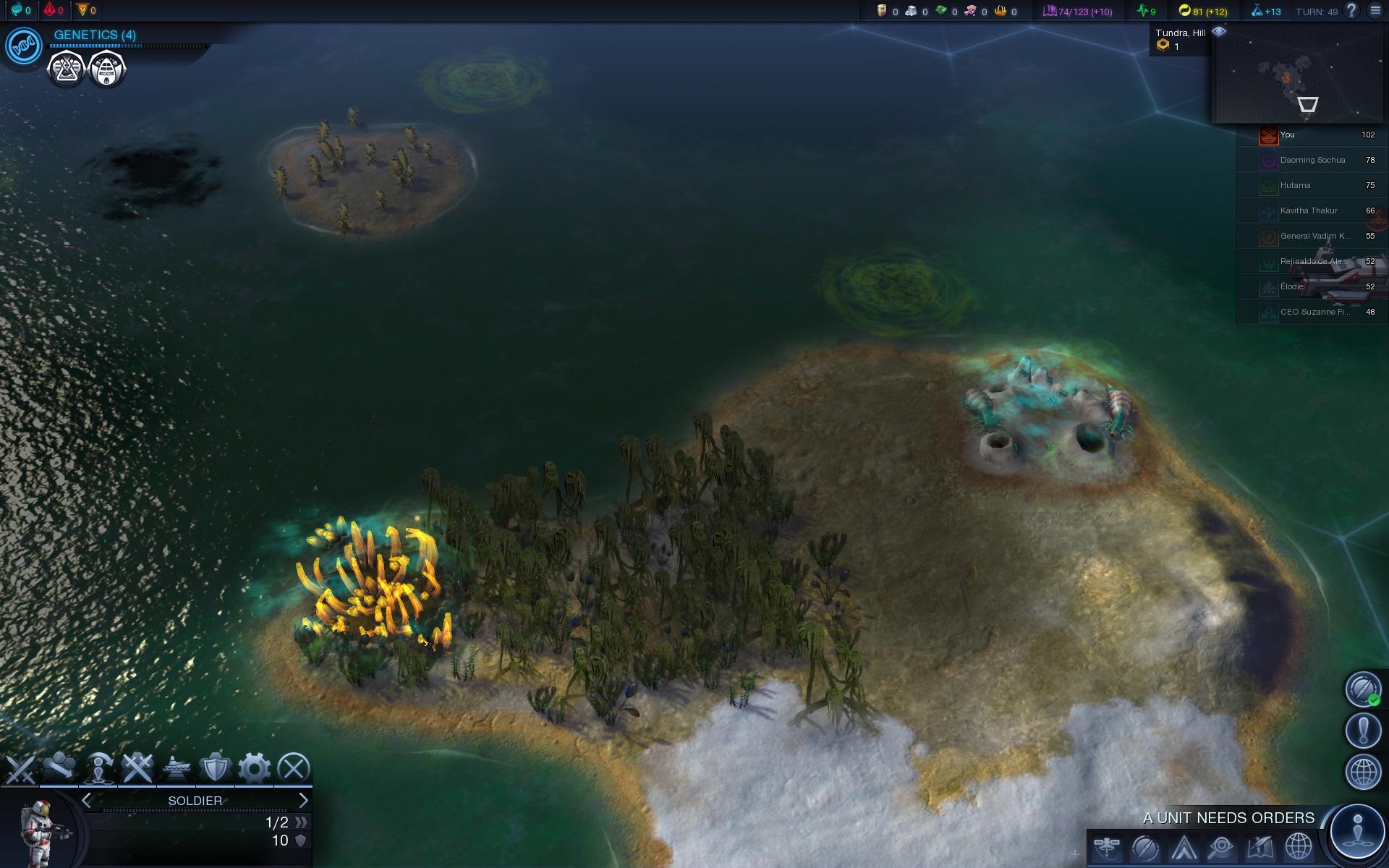
Miasma
There are a couple of new terrain features but the most notable is miasma. Miasma looks like a cloud of green stuff over whatever tile it is on, not to be confused with Xenomass, marsh, or algae which also look like a bunch of green stuff. All these similar looking tiles coupled with a vibrant landscape can make miasma very hard to see and very annoying to deal with. When a unit starts its turn on a tile with miasma it loses ten health, while alien’s will heal five health instead. There is a path on the tech tree that will unlock options to remove miasma, as well as make your workers immune to it. Alternatively, if you level up the Harmony affinity, miasma will do less damage to your units and then eventually heal them.
In the above image: miasma can be seen as the green clouds over the Firaxite and again over the resource on the right.
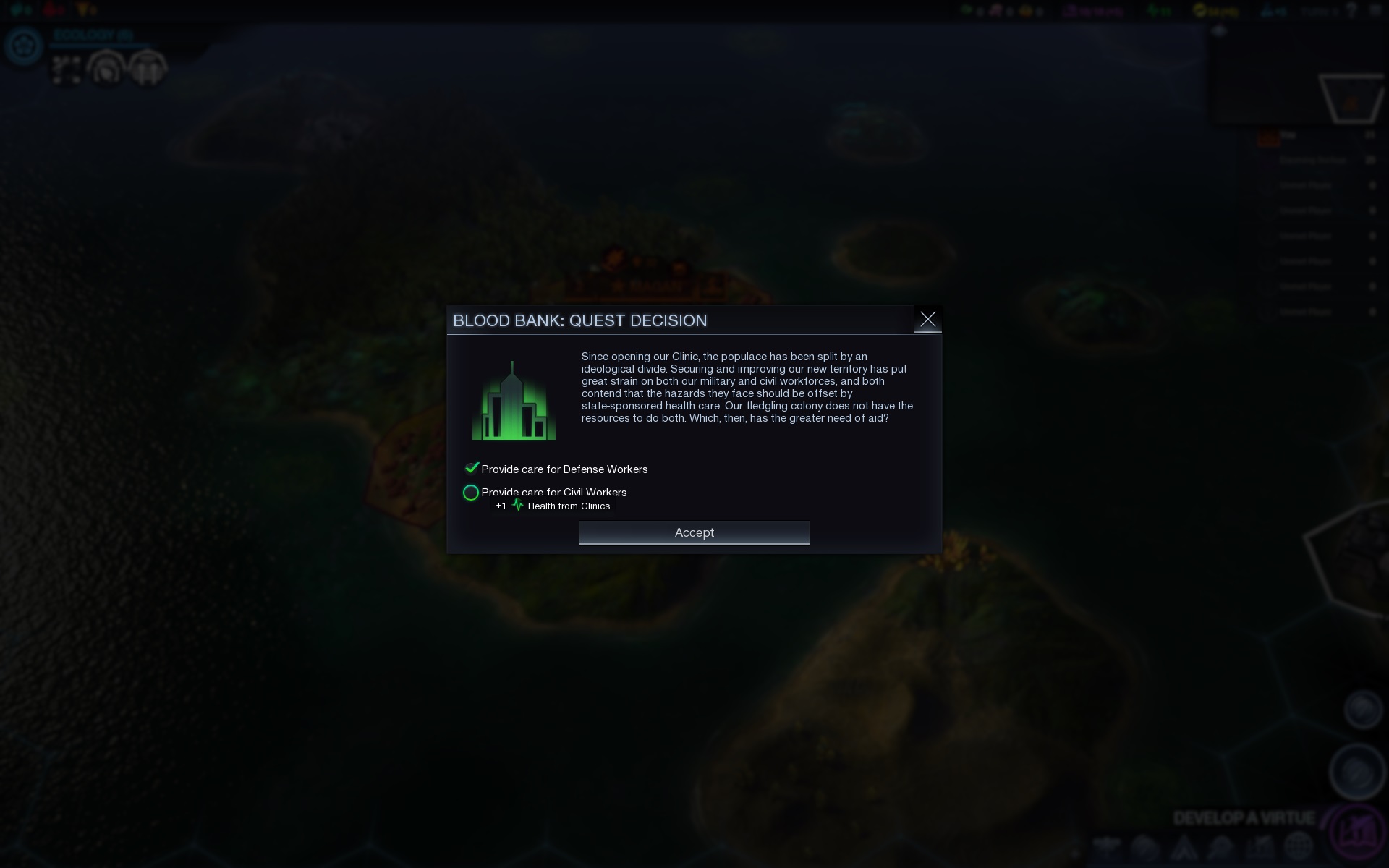
Quests
Quests are either tasks or decisions that give bonuses to your civ when completed or answered. For example, upon finding your first resource pod, the equivalent of Civilization V’s ancient ruins, you are given a quest to find two more, which will then give you a larger reward. When you build a new building for the first time, you will receive a quest a few turns later. The decision you make in that building quest will permanently upgrade the building within your civ based on the bonus associated with your choice. Quests are also used in a variety of other ways, the most vital of which is providing affinity experience.
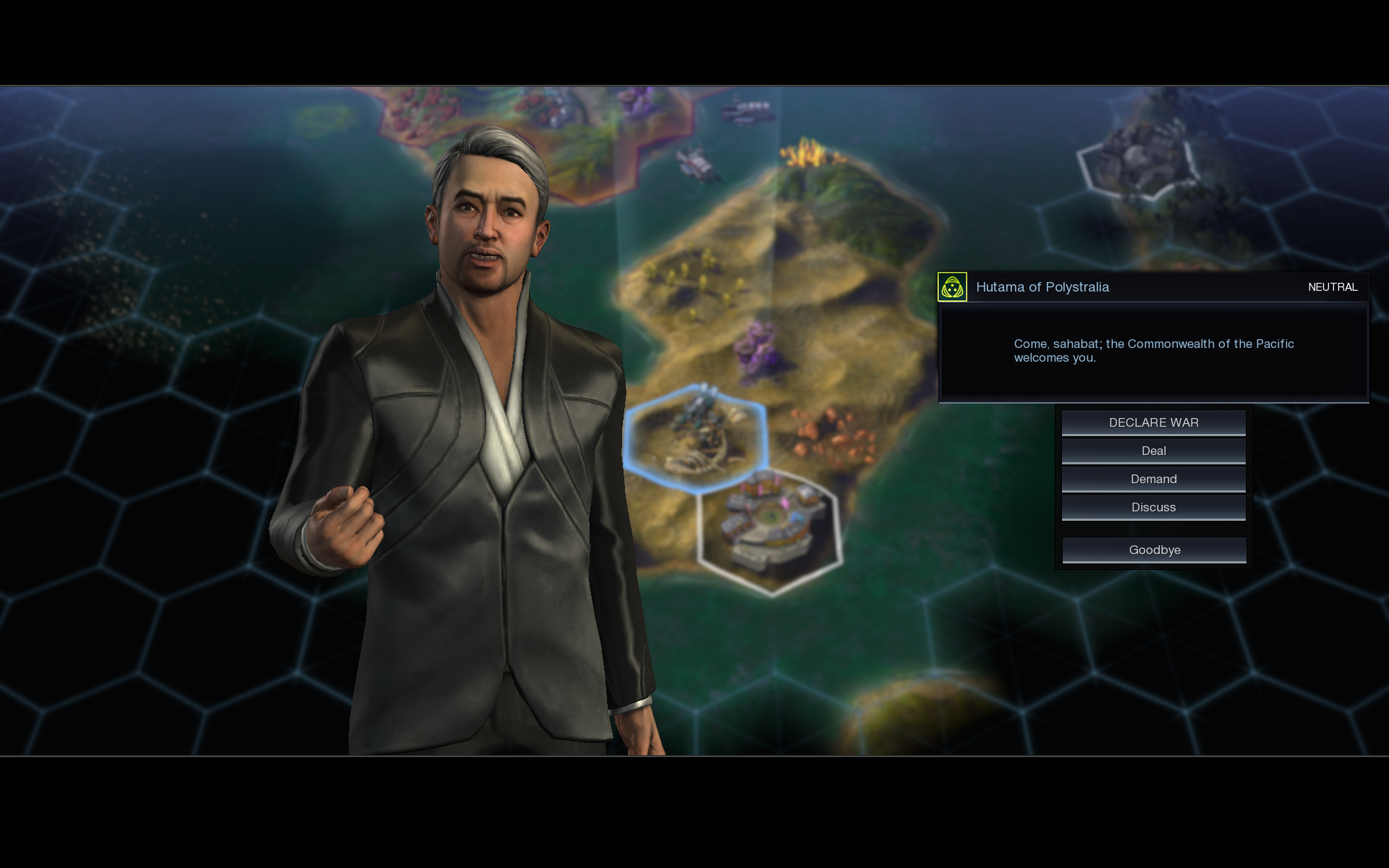
Meeting new civs
Another subtle difference: you no longer need to encounter the unit or city of another civ to meet and communicate with them. Instead, you will automatically be introduced to their leader when they land their first city. They don’t all land right at the start with you, instead appearing every few turns for the beginning of the game. In my experience, this delay doesn’t put them very far behind, if at all.
As an aside, there is also a new feature when trading with other civs called favors. The AI might ask for something in exchange for a favor, which you can then later use in trade to get more from them in return.
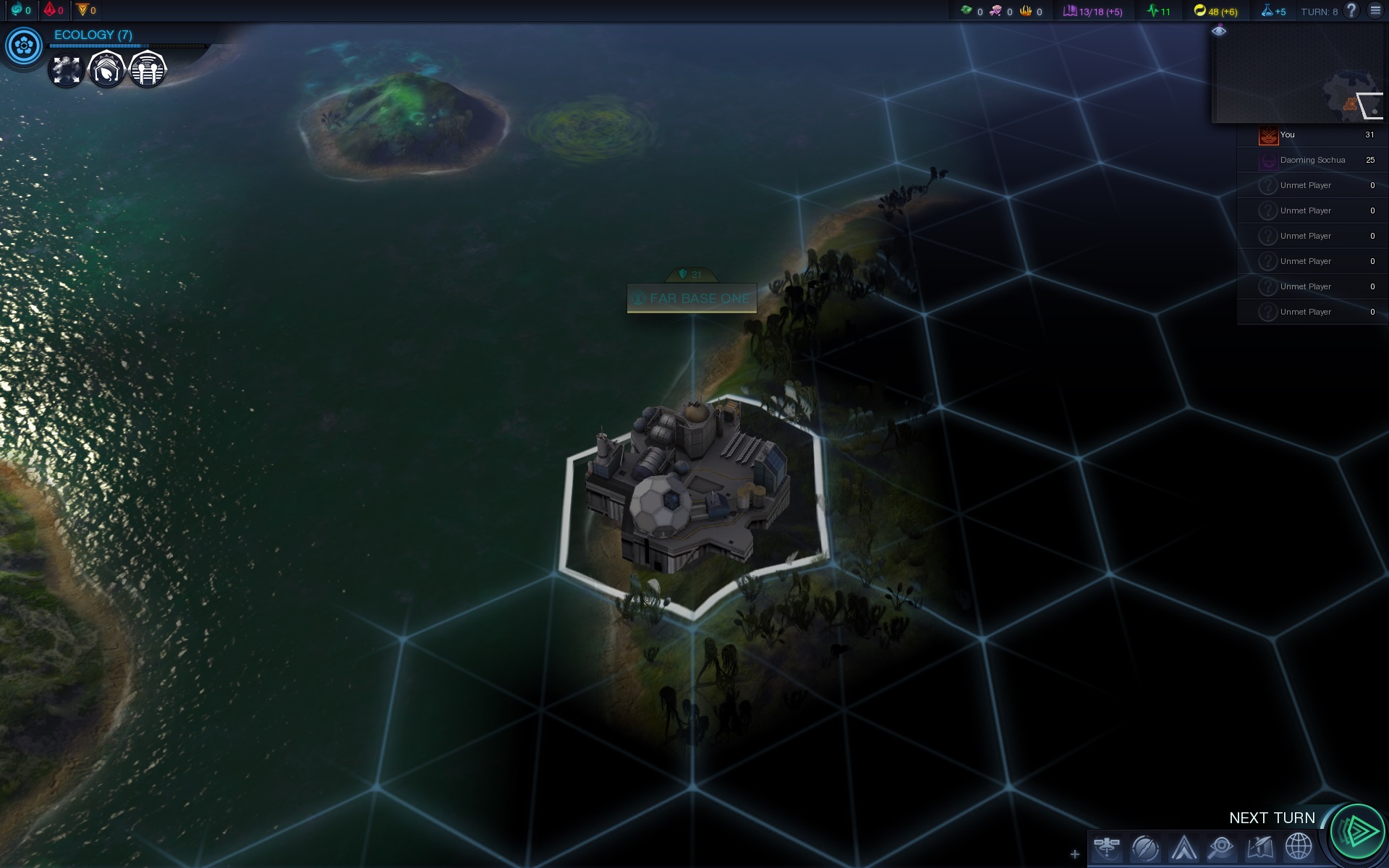
Stations
City-states have been replaced by stations, which no longer have their own units and only take up the one tile they are on. They have no allegiance and can pretty much only be used for trade as they no longer ally, befriend, or get angry at any civs. The bonuses a new station provides are usually random, but occasionally the player will get a quest to decide between two different options.
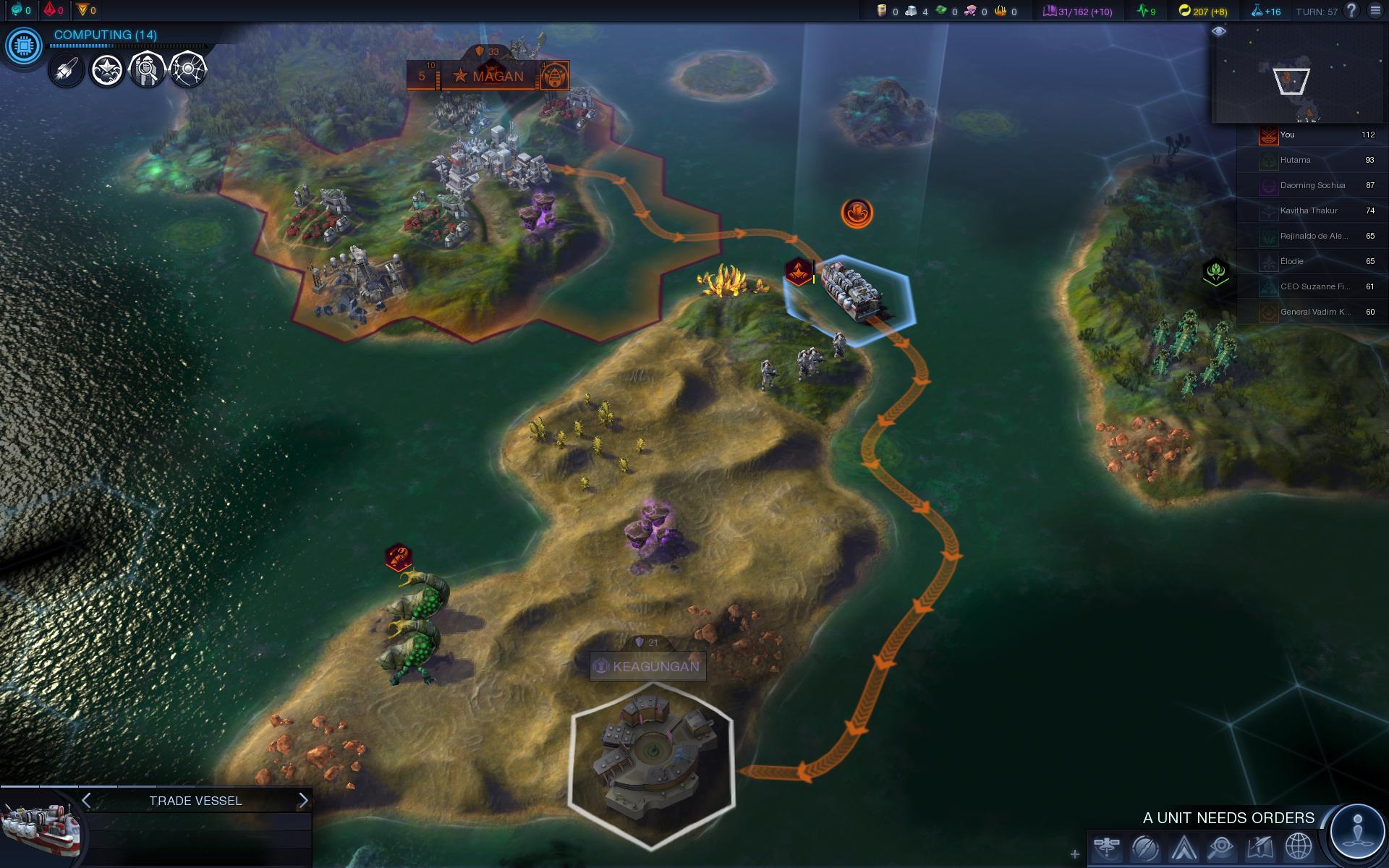
Trade Routes
If you have the Brave New World expansion for Civilization V then trade routes will act exactly as you are used to, but for those with only the base game it’s a brand new feature. You gain trade routes for a city from certain buildings, and then send either a land or sea based unit to 'trade' with another city or station. Trading between your own cities gives them both a boost in food and production, trading with a station gives your city a boost of stats based on what that station provides, and trading with an opposing civ’s city gives both cities bonus science and food.
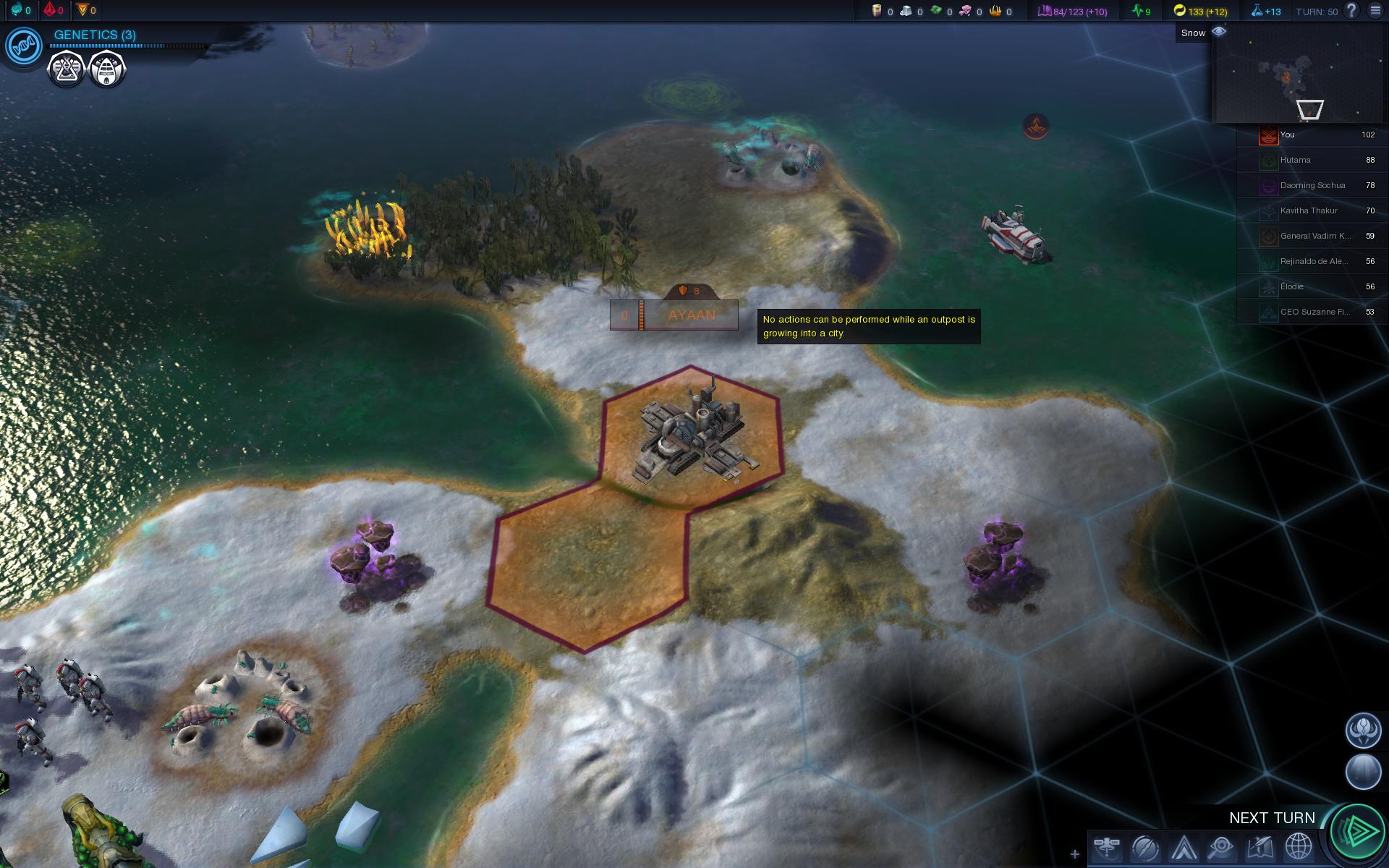
Outposts and founding new cities
Not a huge change, but one that might catch experienced players off guard. Creating settlers to found cities hasn’t changed, but when you found a new city it now begins as an outpost. Outposts start by only controlling two tiles and slowly expand their borders one tile at a time. Until the outpost has control of all adjacent tiles, it’s uncontrollable and essentially acts as a puppet city. You can significantly speed up the outpost's growth by using a trade route to it from another one of your cities.
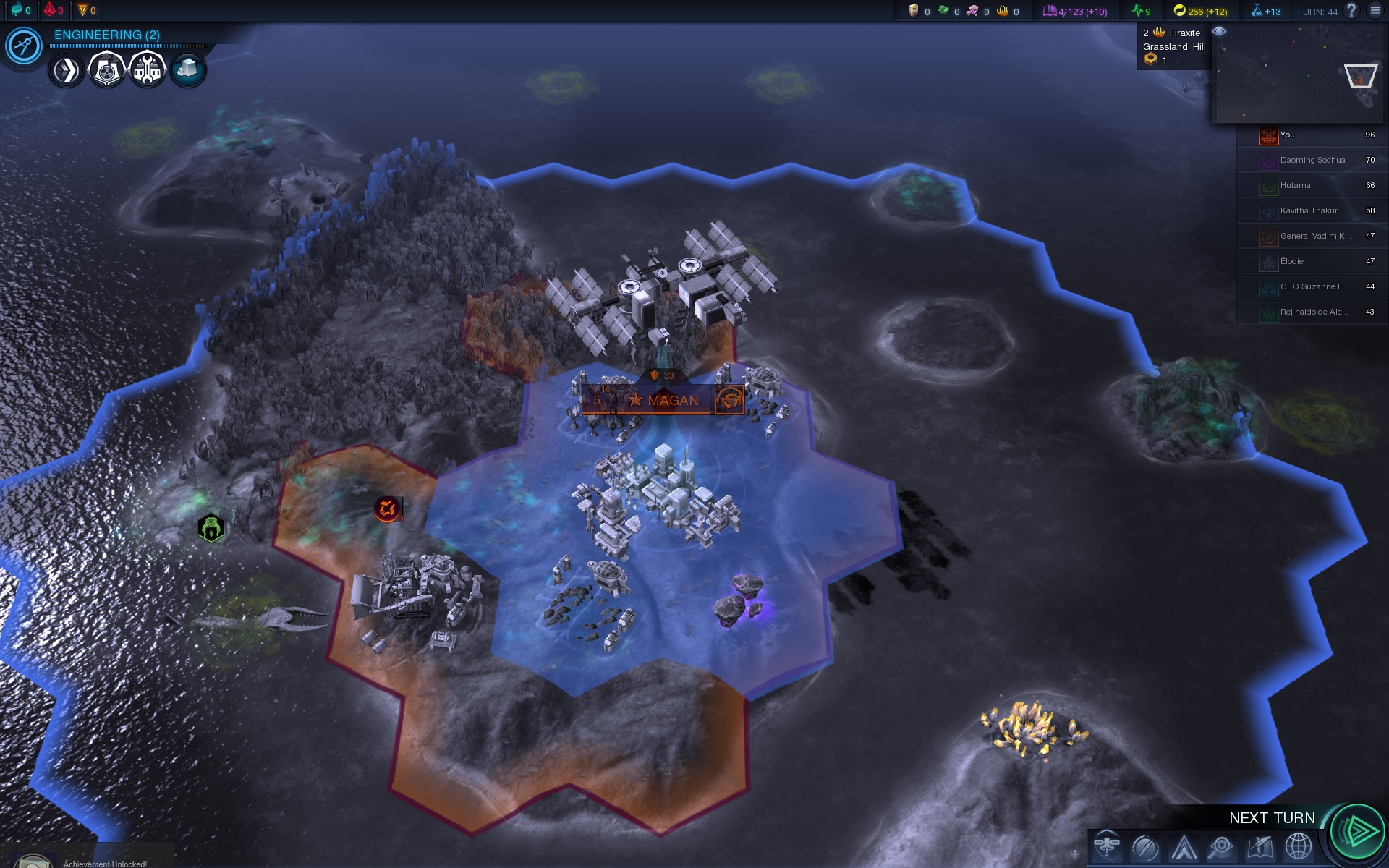
Satellites and the orbital layer
The orbital layer is just a fancy name for the screen used to view your satellites, a new type of unit with a new set of rules. Satellites are built like normal units and then launched into the orbital layer, unable to move after being launched. Each satellite has a set amount of turns it stays active before being expended, and while it’s active has some effect on the tiles below it. For example, one satellite will clear the miasma from the tiles beneath it, while another provides an energy boost to any worked tiles. Every city has a base range around them for where satellites can be launched, but that range can be expanded greatly through buildings and quest decisions.
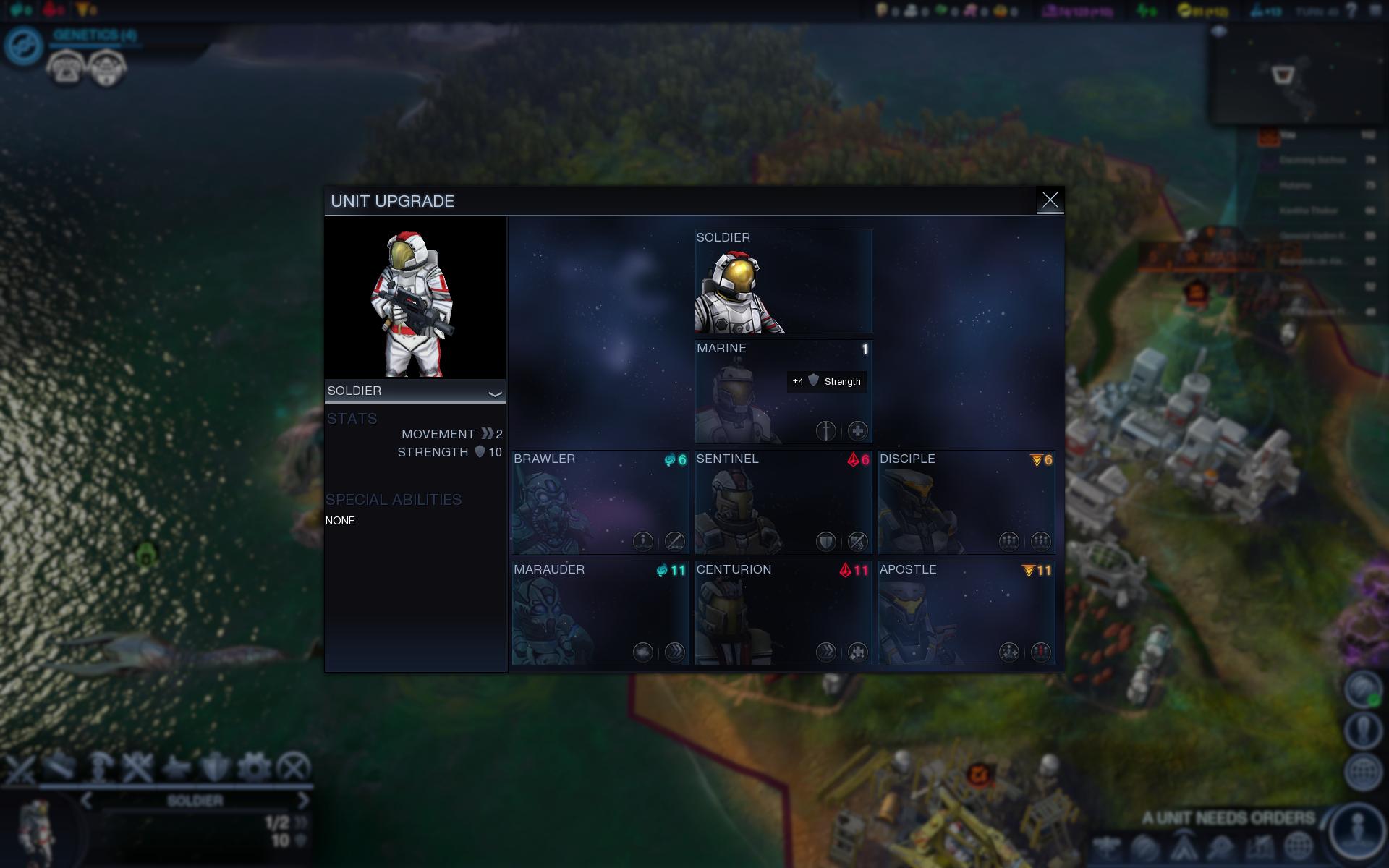
Military unit upgrades
This is one of the more significant changes: you no longer unlock better military units through research. At least not directly. Once you research the base unit of each type (melee, ranged, sea, flying, etc,) you upgrade them by leveling up your affinities. Each level unlocks a better version of a unit and offers you a choice to customize that unit to your liking. The specific affinity you advance in will also affect the stats and abilities of the unit further down its path. When you upgrade a unit type, it immediately updates every version of that unit you have, meaning you no longer have to pay to upgrade your army.
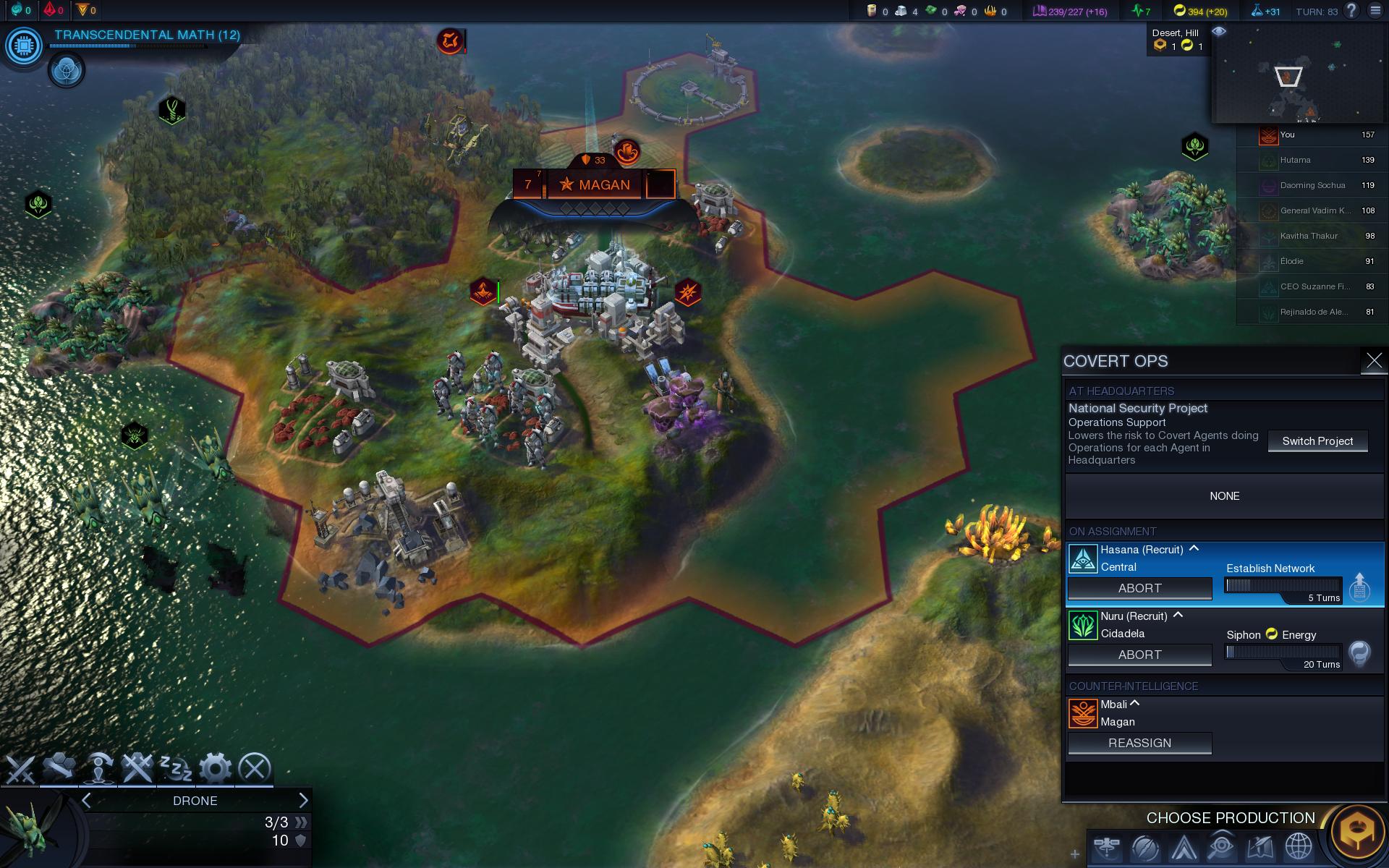
Spies
A feature originally added to Civilization V through its Gods & Kings expansion, spies have undergone a bit of a rework in Beyond Earth. Your civ is immediately granted three spies when you build the Spy Agency, only available after researching the very early Computing tech. These spies start at a low level and can be assigned to any of your opponents’ capitals where they will carry out espionage assignments that range from stealing energy to bombing the city. The more things they successfully do in a city, the more they will level up, unlocking greater and more effective crimes to commit.
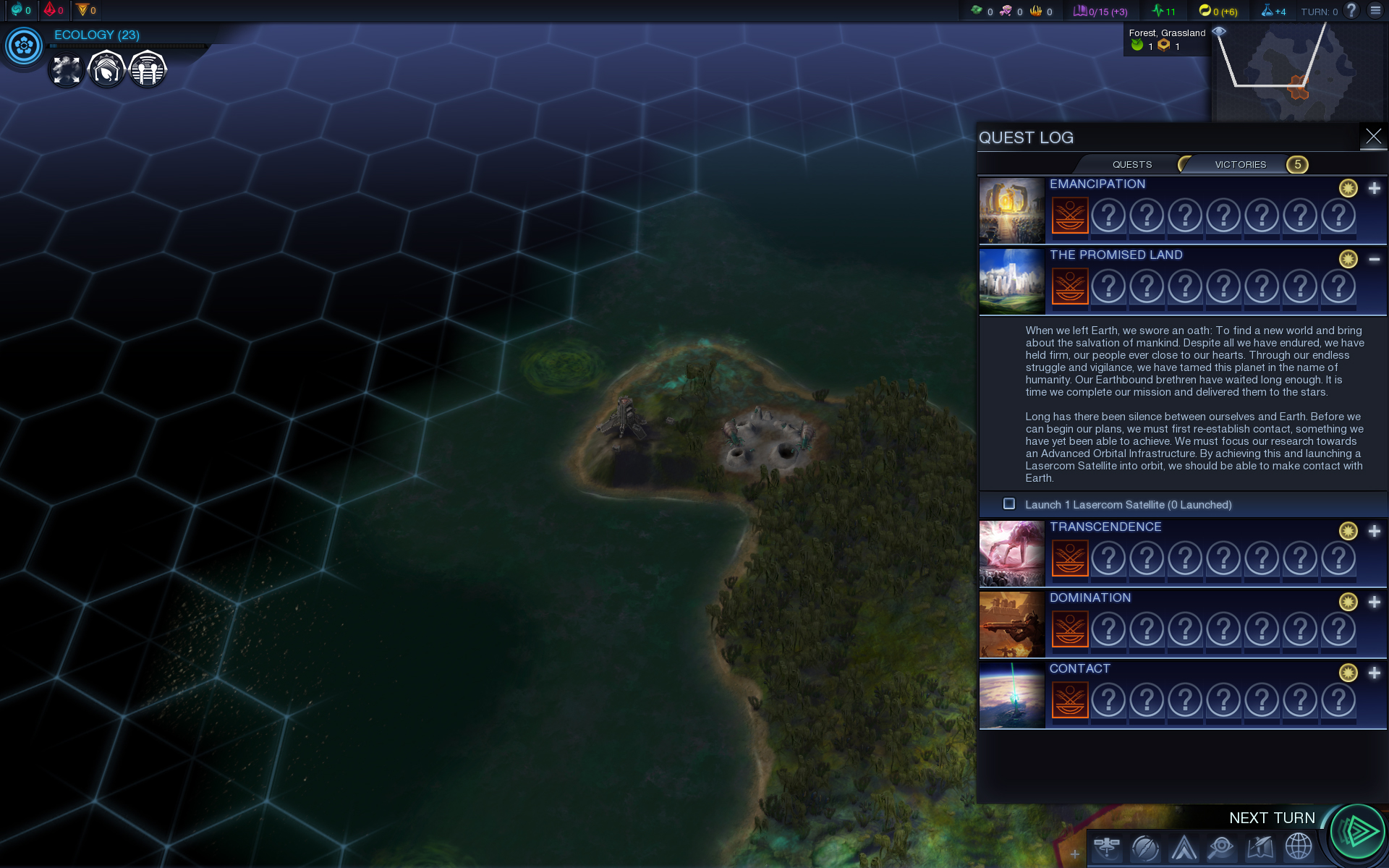
Victory Conditions
The old victory conditions have been replaced with five new ways to win that all require more than just “get a lot of one type of resource.” The Domination victory is the same, but that’s probably because “destroy everyone else” doesn’t have a lot of room for nuance. Another familiar way to win is the Contact victory, which will require a large amount of science but also relies on exploring and a few quests. The last three victories—Transcendence, Promised Land, and Emancipation—each correlate to one of the affinities, and can only be achieved by reaching level 13 with that affinity and then completing a specific task.
